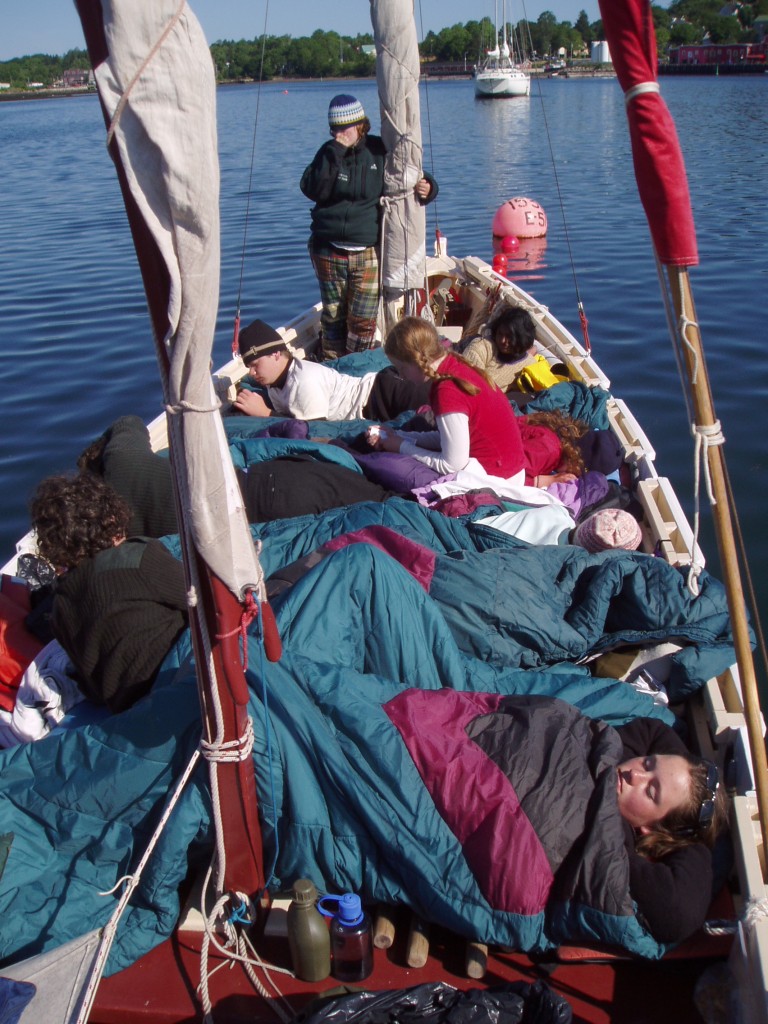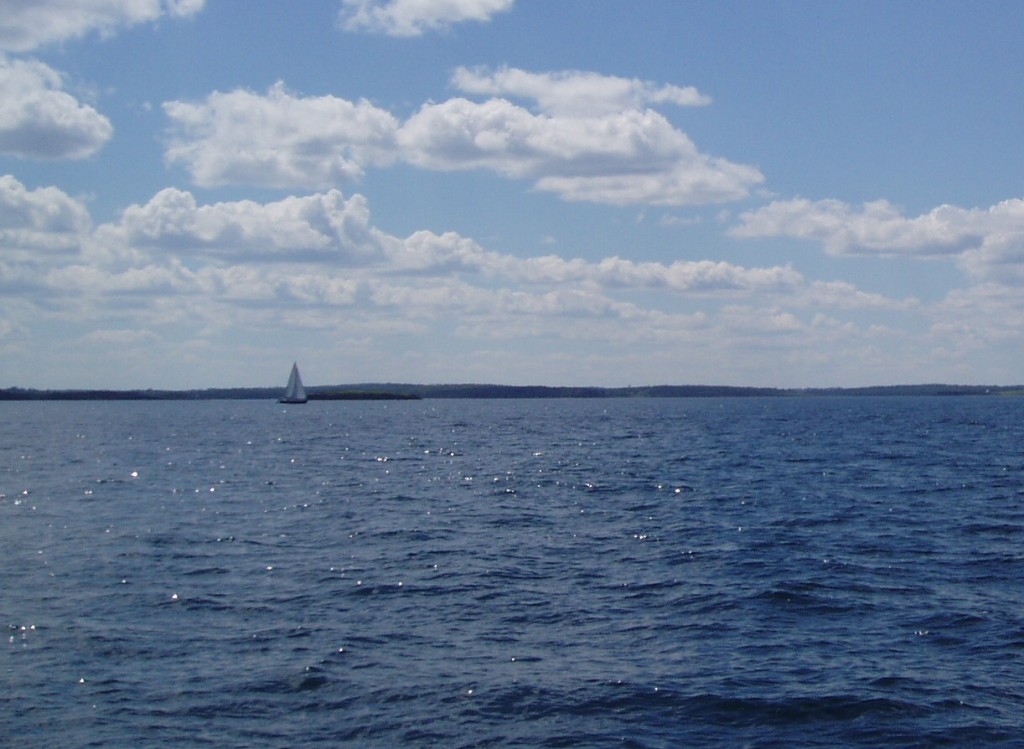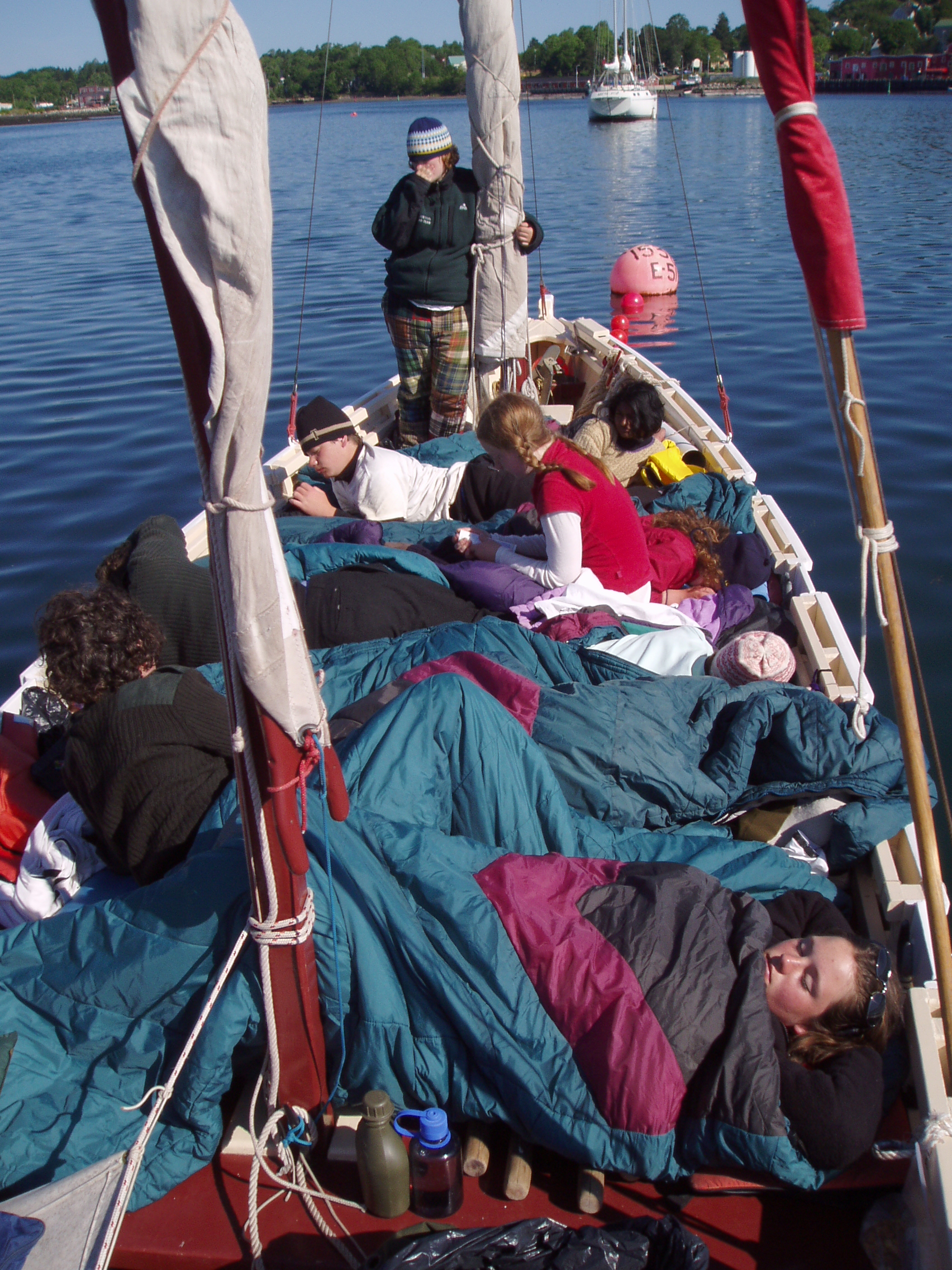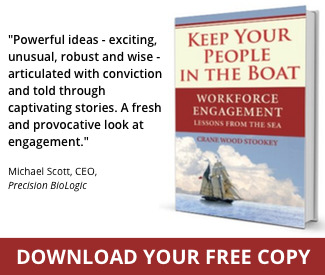 Our culture teaches us to be addicted to activity, and this is how we learn to mistake claustrophobia for engagement. We fill up the space of our lives with tasks, with talk, with preoccupation, with judgment, with assumptions about things we’ve never bothered to really ask about, with expectations and tensions and conflicts, with deadlines and ambitions, and the list goes on.
Our culture teaches us to be addicted to activity, and this is how we learn to mistake claustrophobia for engagement. We fill up the space of our lives with tasks, with talk, with preoccupation, with judgment, with assumptions about things we’ve never bothered to really ask about, with expectations and tensions and conflicts, with deadlines and ambitions, and the list goes on.
This intensely over-full world we usually create for ourselves is vividly reflected on a Nova Scotia Sea School voyage, where 13 people live in a boat that is 30′ long and 7′ wide, for 5 days or longer. We are all literally on top of each other all the time; cooking and eating, getting at our gear, sailing, rowing and navigating, changing clothes, squeezing between each other to sleep, everybody talking at once. It can be an intensely claustrophobic experience.
But we’re also out along the magical Nova Scotia coast, with remote islands and rocky shores on one side, the ocean and horizon on the other, the spreading sky above. We are surrounded by vast space.
The choice between mental claustrophobia and the more spacious, expansive frame of mind depends on which way we choose to look.
So as a practice of shifting our attention from claustrophobia to space, we regularly take time to turn away from looking in at the crowded boat, and sit in silence facing out into the big world. We might do this for 5 minutes, we might do it for 30, depending on how we feel. This practice of regularly relating to space makes the claustrophobia manageable.

Of course we don’t need a boat to experience this. Mental space is always available to us. It just depends on which way we choose to look. We can look out a window, or go for a walk. I’ve had business groups around a board room table turn and look “out,” especially when the conversation gets difficult or needs a fresh perspective. Everyone turns their chairs around and faces out, and even if they’re just looking at a wall, it’s remarkably, unexpectedly effective.
And space is just as available without any of these techniques, when we look for it in ourselves. Learning to look out into the big world is good practice for being able to look within ourselves and find that sense of expansive mental space, when we need it, on the spot. This is how we practice self-engagement.
Of course a voyage on a sail boat requires a great deal of activity. So does raising a family or building a career. Activity is not the enemy. But we don’t really benefit from jamming activity into our lives like a stuff sack. We accomplish more when we feel we have space to move.
The Sea School experience is designed to be intensely claustrophobic because it highlights the alternative. Our days stuffed with people and tasks are a great teacher about the value of space. And when we find that sense of mental space to move, when we can bring that expansive state of mind to whatever we need to do, we become all-accomplishing, and our world gets very big. This is a self-leadership skill we can train ourselves in.
I’m leading a 5-day Professional Development voyage with the Sea School,intended for a broad range of corporate, government and NGO leaders, educators and others who lead groups. No sailing experience necessary. September 17-21, based in Lunenburg, Nova Scotia. Contact me for more information.



